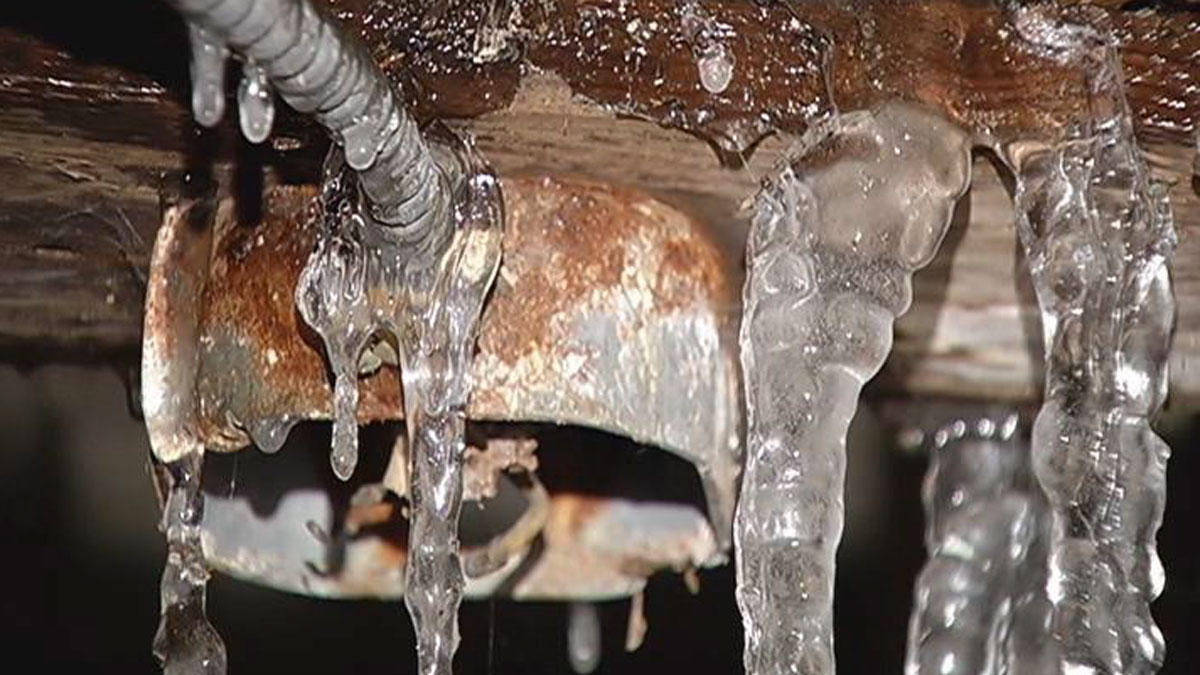Guidance for Preventing Frozen Plumbing in Winter: Expert Insights
Guidance for Preventing Frozen Plumbing in Winter: Expert Insights
Blog Article
In this article further down you might get a bunch of sound information about 6 Ways to Prevent Frozen Pipes.

Winter can wreak havoc on your pipes, particularly by freezing pipelines. Below's just how to avoid it from happening and what to do if it does.
Introduction
As temperature levels decrease, the risk of icy pipelines rises, possibly causing pricey repairs and water damage. Understanding exactly how to avoid icy pipes is critical for property owners in cold climates.
Understanding Icy Pipes
What causes pipes to ice up?
Pipes ice up when exposed to temperature levels below 32 ° F (0 ° C) for prolonged periods. As water inside the pipes freezes, it broadens, taxing the pipe walls and possibly triggering them to burst.
Threats and damages
Icy pipes can bring about supply of water disruptions, residential or commercial property damages, and expensive fixings. Burst pipelines can flood homes and trigger extensive structural damages.
Signs of Frozen Water Lines
Determining icy pipes early can avoid them from breaking.
How to recognize frozen pipelines
Look for reduced water flow from taps, unusual odors or sounds from pipes, and visible frost on revealed pipes.
Avoidance Tips
Insulating prone pipelines
Wrap pipes in insulation sleeves or use warm tape to secure them from freezing temperature levels. Concentrate on pipes in unheated or exterior locations of the home.
Home heating strategies
Keep interior spaces sufficiently warmed, specifically locations with pipes. Open up closet doors to enable warm air to distribute around pipelines under sinks.
Securing Outdoor Plumbing
Garden hoses and outside taps
Disconnect and drain pipes yard hose pipes prior to winter season. Mount frost-proof spigots or cover exterior faucets with insulated caps.
What to Do If Your Pipelines Freeze
Immediate activities to take
If you suspect frozen pipes, maintain taps available to ease pressure as the ice melts. Make use of a hairdryer or towels soaked in warm water to thaw pipelines gradually.
Long-Term Solutions
Architectural modifications
Take into consideration rerouting pipelines far from outside wall surfaces or unheated locations. Add added insulation to attic rooms, basements, and crawl spaces.
Updating insulation
Invest in high-quality insulation for pipelines, attics, and walls. Proper insulation assists preserve regular temperatures and lowers the danger of icy pipes.
Verdict
Protecting against frozen pipes needs positive actions and fast responses. By comprehending the causes, signs, and preventive measures, home owners can shield their pipes throughout cold weather.
5 Ways to Prevent Frozen Pipes
Drain Outdoor Faucets and Disconnect Hoses
First, close the shut-off valve that controls the flow of water in the pipe to your outdoor faucet. Then, head outside to disconnect and drain your hose and open the outdoor faucet to allow the water to completely drain out of the line. Turn off the faucet when done. Finally, head back to the shut-off valve and drain the remaining water inside the pipe into a bucket or container. Additionally, if you have a home irrigation system, you should consider hiring an expert to clear the system of water each year.
Insulate Pipes
One of the best and most cost-effective methods for preventing frozen water pipes is to wrap your pipes with insulation. This is especially important for areas in your home that aren’t exposed to heat, such as an attic. We suggest using foam sleeves, which can typically be found at your local hardware store.
Keep Heat Running at 65
Your pipes are located inside your walls, and the temperature there is much colder than the rest of the house. To prevent your pipes from freezing, The Insurance Information Institute suggests that you keep your home heated to at least 65 degrees, even when traveling. You may want to invest in smart devices that can keep an eye on the temperature in your home while you’re away.
Leave Water Dripping
Moving water — even a small trickle — can prevent ice from forming inside your pipes. When freezing temps are imminent, start a drip of water from all faucets that serve exposed pipes. Leaving a few faucets running will also help relieve pressure inside the pipes and help prevent a rupture if the water inside freezes.
Open Cupboard Doors
Warm your kitchen and bathroom pipes by opening cupboards and vanities. You should also leave your interior doors ajar to help warm air circulate evenly throughout your home.

I hope you liked our excerpt about Prevent Frozen Pipes . Thanks so much for spending some time to browse our piece. Are you aware of another person who is excited about the niche? Feel free to share it. Thanks for being here. Please check our website back soon.
Book Now! Report this page